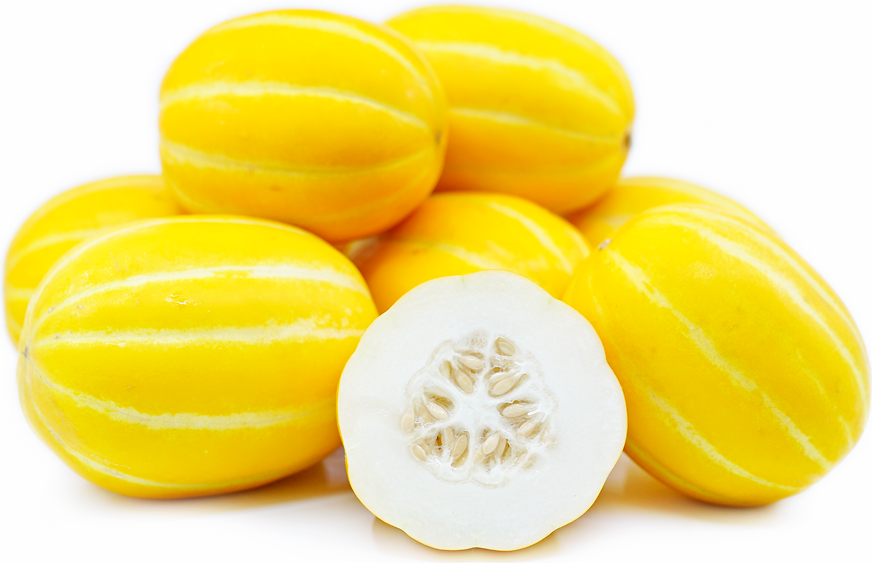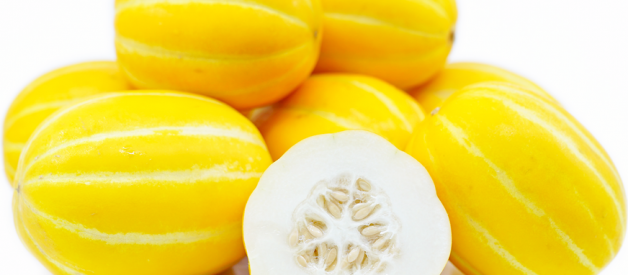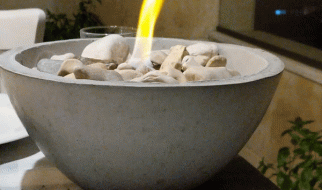
Summer?s an amazing time of year, and hopefully, wherever you are there are plenty of fruit for eating ?! Good ripe melons of all kinds always remind me that good weather, good friends, and good times lay just ahead ?.
Today I?m introducing one of my favorite melons, less commonly known, at least here in the US: the Korean or Oriental melon. As the name suggests, this melon does get cultivated in Korea and is very popular there, although it?s also well-known in Japan, and studies suggest it might actually have originated in eastern India and made its way to Korea and Japan by way of the Silk Road. Interestingly, in the early 1900?s Korea, western melons became preferable to this melon amongst the wealthy so that by the end of the century it was negatively associated with peasant food. Isn?t it fascinating how foods can become trendy or less desirable depending on associations ? independent of the actual flavor of such foods? Peasant food or not, this melon is delicious and anyone who has not tried it should do so if given the opportunity!
Korean melon is fairly distinct in character from typical western melons such as watermelon, cantaloupe, and honeydew. It looks rather like a bloated, smooth, stripey, yellow cucumber about the length of your hand. The skin is paper-thin and easy to pierce. Once you?ve cut it open, it looks distinctly melon-like except that the flesh is very firm and very white.

I prepare this melon by peeling it ? typically with a peeler since the skin is so thin ? and then scooping out the middle before cutting into length-wise sections, and then devouring on the spot, sometimes before my husband gets any ?. Apparently, it can be eaten whole, skin, seeds and all but I?ve tried it and was not a fan. These melons are high in vitamins A and C ? another reason you should try one!
The Korean melon has a very crisp and sweet flavor ? like a sweet, honeydew-flavored cucumber. I love honeydew flavor but I often find the texture to be too soft and spongey. This melon tastes very much like honeydew to me but there?s a satisfying crunch to every bite. I think the crispness makes it superior to cantaloupe and honeydew ? although this might just be due to the fact that I?m Vietnamese ?.
Growing up we often ate and/or preferred fruit with a crunch, and would eat pears and peaches before they were fully ripe and too soft. I didn?t enjoy a tree-ripened juicy peach until well into my 20?s ? while picking them tree-ripened at a farm in New Jersey. Now I love peaches this way but not honeydews and cantaloupes that are very soft and juicy because it makes me think that they?re over-ripe even if that?s when they?re at their sweetest. In a similar way, it seems like sweetness is the over-riding factor for most Americans. It?s well-known that products for the American market are sweeter than their counterparts abroad ? and this apparently extends to fruit as well. Fruit for the American market seems to be selected along this line alone; leaving out fruit that has any tartness or slight bitterness and other complex flavors ? in a word, interesting. Of all the staple fruits available in the US there aren?t many that have any tartness; maybe some berries, but berries that are really tart, bordering on sour, are excluded ? like gooseberries and currants. I can?t think of any fruit commonly sold here that?s actually sour. Of the foreign fruit that?s typically sour, the imported varieties are inevitably sweet ? like tamarind. This is unlike other areas of the world where sour flavor is common and beloved. Within the profusion of fruits that I got to experience last year in Borneo were a few savory fruits ? I wonder how open-minded Americans would be to this? but I digress?
I hope that we all keep an open mind: about people, experiences, love, and fruit ?!
Fruitfully Yours,
Yen
If you liked this post, you might also like my posts about mangosteens, pawpaws, monstera deliciosa, persimmons, or loquats.
If you want to learn more about me, please click here.
Read about my fruitarian adventure in Borneo, in 4 parts:
For Part 1 ? Trip and Borneo overview ?, click here.
For Part 2 ? fruit markets and waterfalls ? click here
For Part 3 ? mud volcanoes ?, Brunei jungle canopy tour ?click here
For Part 4 ? hot springs?, leech hike ?, and wrap up click here
Follow me on Instagram at https://www.instagram.com/yenvudesign/


